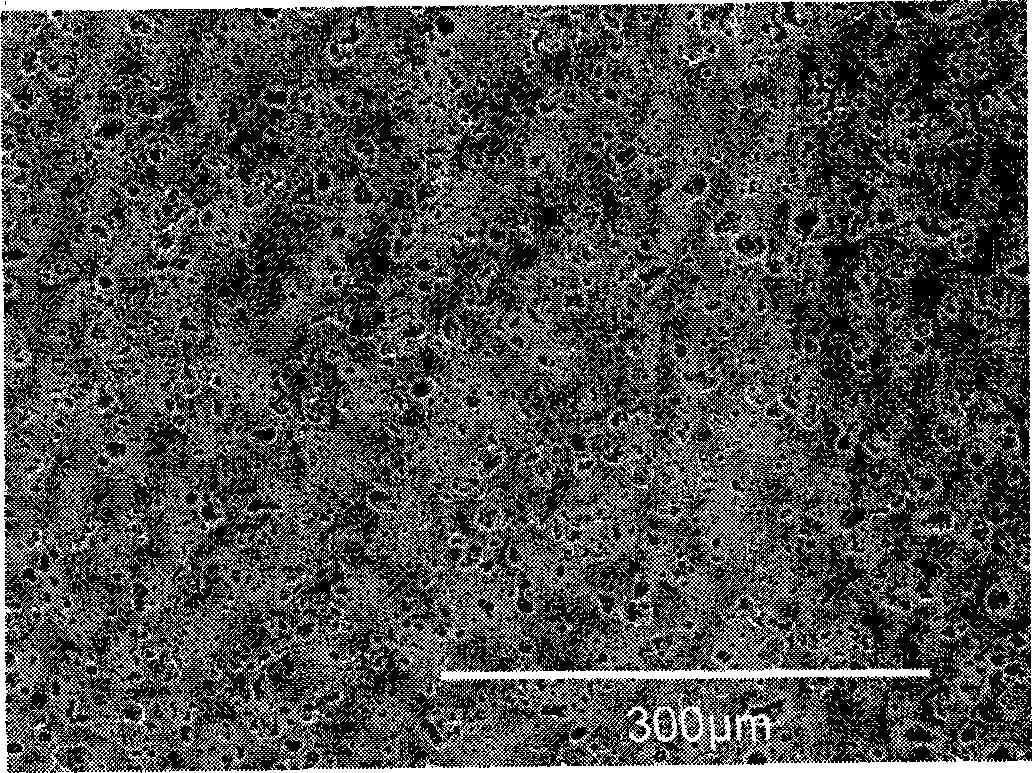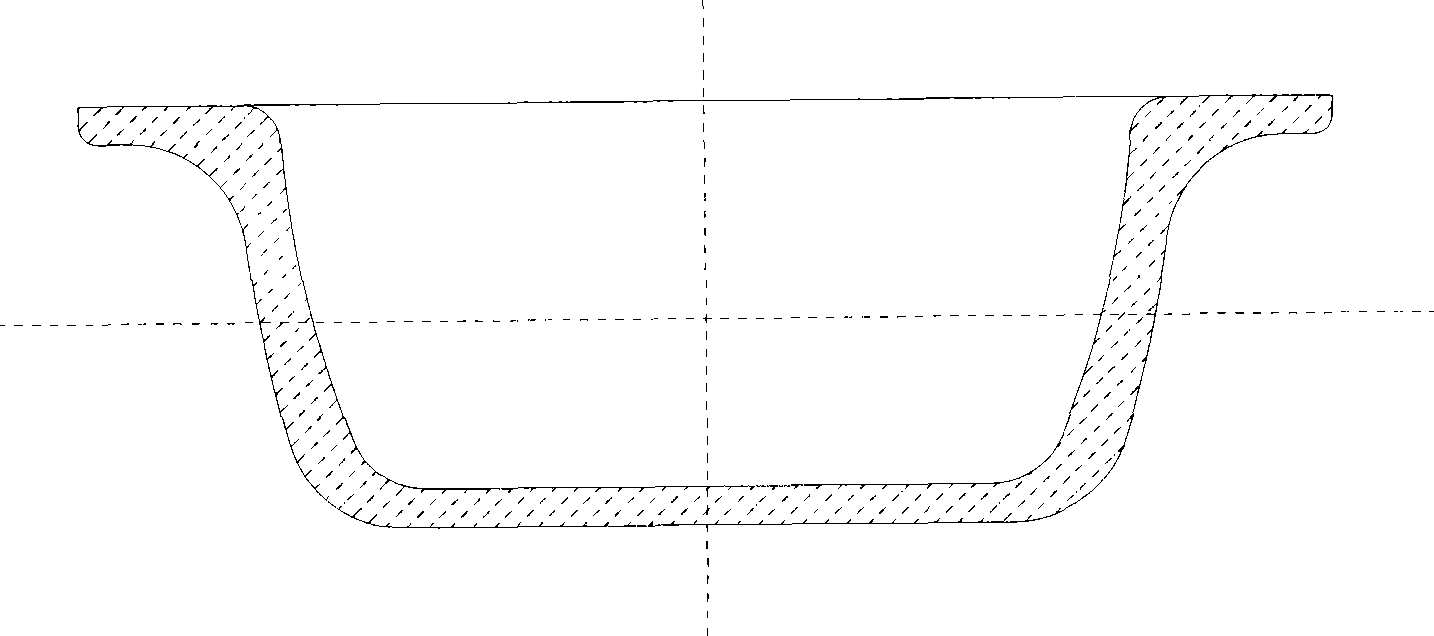Low expansion heat resisting porous ceramic and preparation thereof
A porous ceramic, low-expansion technology, used in ceramic products, other household appliances, applications, etc., can solve the problems of poor thermal shock resistance, strength loss, low expansion thermal shock resistance, etc., and achieve good thermal stability. The effect of thermal stability and high mechanical strength
- Summary
- Abstract
- Description
- Claims
- Application Information
AI Technical Summary
Problems solved by technology
Method used
Image
Examples
Embodiment 1
[0036] The weight percentage of its raw materials is: 70% of natural spodumene ore, 20% of zirconia, and 10% of quartz sand. After the raw materials are mixed according to the formula design requirements, they are mixed and ground according to the weight ratio of material: ball: water: 1:1.5:0.6 After 10 hours, pass through a 300-mesh sieve and the remaining amount is less than 0.5%, dry and pulverize.
[0037] Adopt dry powder molding method: add 2wt% polyvinyl alcohol (PVA) accounting for the total weight of the raw materials, water accounting for 5wt% of the total weight of the raw materials, grind and mix evenly, and use a steel mold to press under a pressure of 30-50MPa. ф200mm, 3~5mm thick disc, dried at low temperature (usually below 100°C) for sintering, the sintering preparation uses a low temperature section to raise the temperature to 1000°C at a rate of 200°C / h, and then at a rate of 100°C / h The highest firing temperature is 1300°C, and it is kept for 5 hours, then...
Embodiment 2
[0040] The weight percent of its raw material is: 80% of natural spodumene ore, 10% of zirconia, 10% of zircon sand, the raw material is mixed and ball-milled for 20 hours through a process similar to Example 1, and the balance of passing through a 300-mesh sieve is less than 0.1%. The 2wt% polyvinyl alcohol (PVA) of described raw material gross weight, account for the 2wt% paraffin of described raw material gross weight and appropriate amount of water, after mixing and grinding, plastic mud ball is made, and described water addition is to make raw material can become plastic mud As the standard, the content of water accounts for about 10% of the total weight of the raw materials.
[0041] Extrusion molding method is used to form discs and boiling pot containers (such as image 3 ), etc., after drying, after trimming, grinding and deburring, etc., the firing process similar to that of Example 1 was fired at 1350 ° C for 6 hours.
[0042] The average coefficient of thermal exp...
Embodiment 3
[0044] The weight percentage of the raw materials is: 65% of natural spodumene ore, 15% of zirconia, 10% of quartz sand, and 10% of kaolin. After the raw materials are mixed according to the formula design requirements, they are ball milled to an average particle size of about 5 μm, and the particle size is round. Then dry and dehydrate to prepare a slurry with a viscosity of about 10-20 (Enstler viscometer).
[0045] The slurry tape casting method is used to control the thickness of the film to 40 μm to 200 μm, and the slurry is fired by a sintering process similar to Example 1 after being dried.
[0046] The above-mentioned products were sintered at 1250° C. for 6 hours using a sintering process similar to that of Example 1. The porous ceramics obtained in this way have high density and can be used in fields such as surface protection and circuit coating.
[0047] The average coefficient of thermal expansion of the porous ceramic material at 200°C-600°C is 20×10 -7 / °C, the...
PUM
| Property | Measurement | Unit |
|---|---|---|
| pore size | aaaaa | aaaaa |
| melting point | aaaaa | aaaaa |
| pore size | aaaaa | aaaaa |
Abstract
Description
Claims
Application Information
 Login to View More
Login to View More - R&D
- Intellectual Property
- Life Sciences
- Materials
- Tech Scout
- Unparalleled Data Quality
- Higher Quality Content
- 60% Fewer Hallucinations
Browse by: Latest US Patents, China's latest patents, Technical Efficacy Thesaurus, Application Domain, Technology Topic, Popular Technical Reports.
© 2025 PatSnap. All rights reserved.Legal|Privacy policy|Modern Slavery Act Transparency Statement|Sitemap|About US| Contact US: help@patsnap.com



